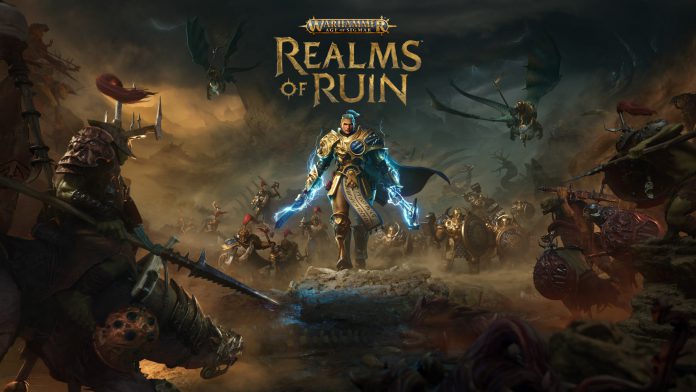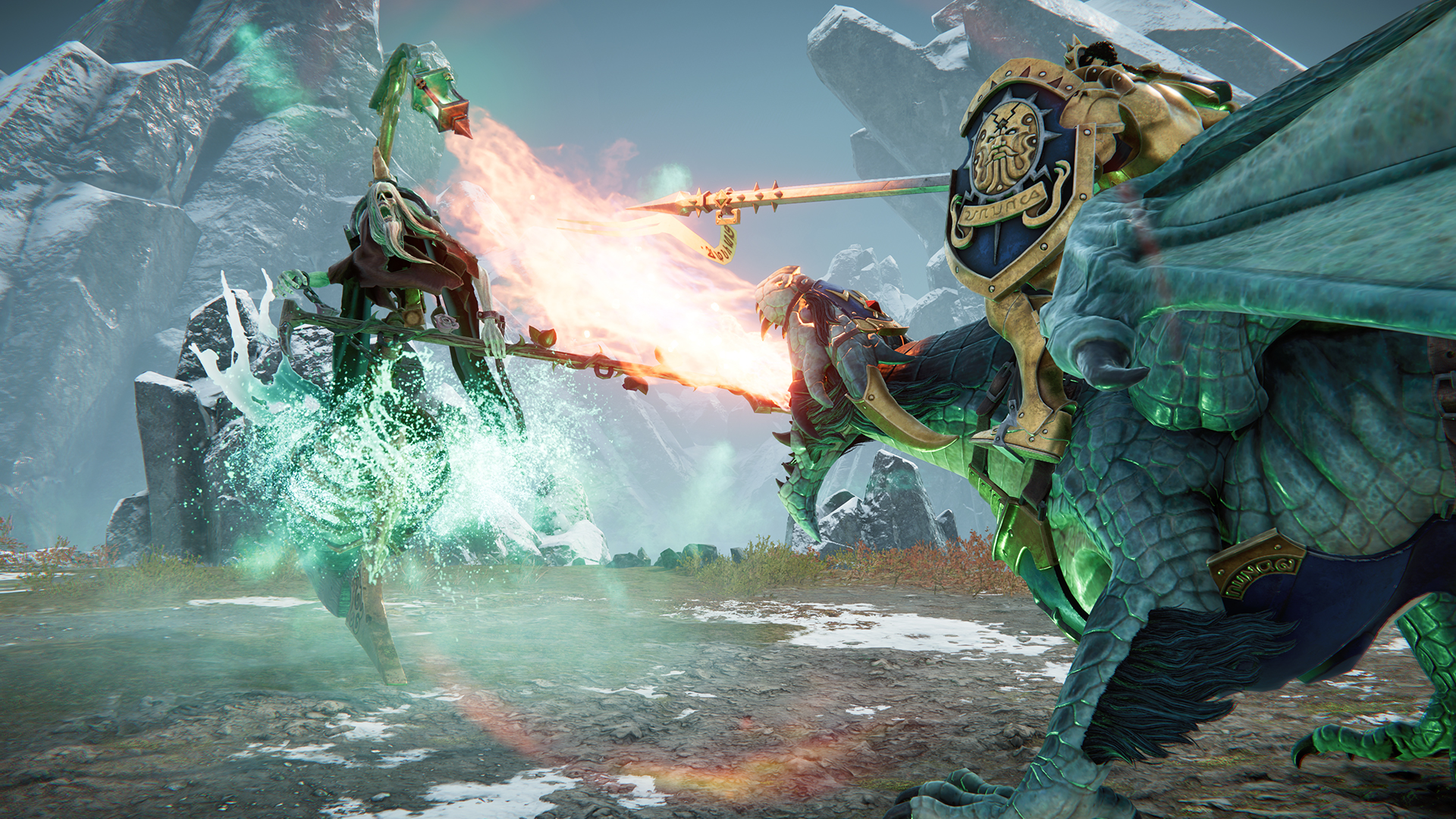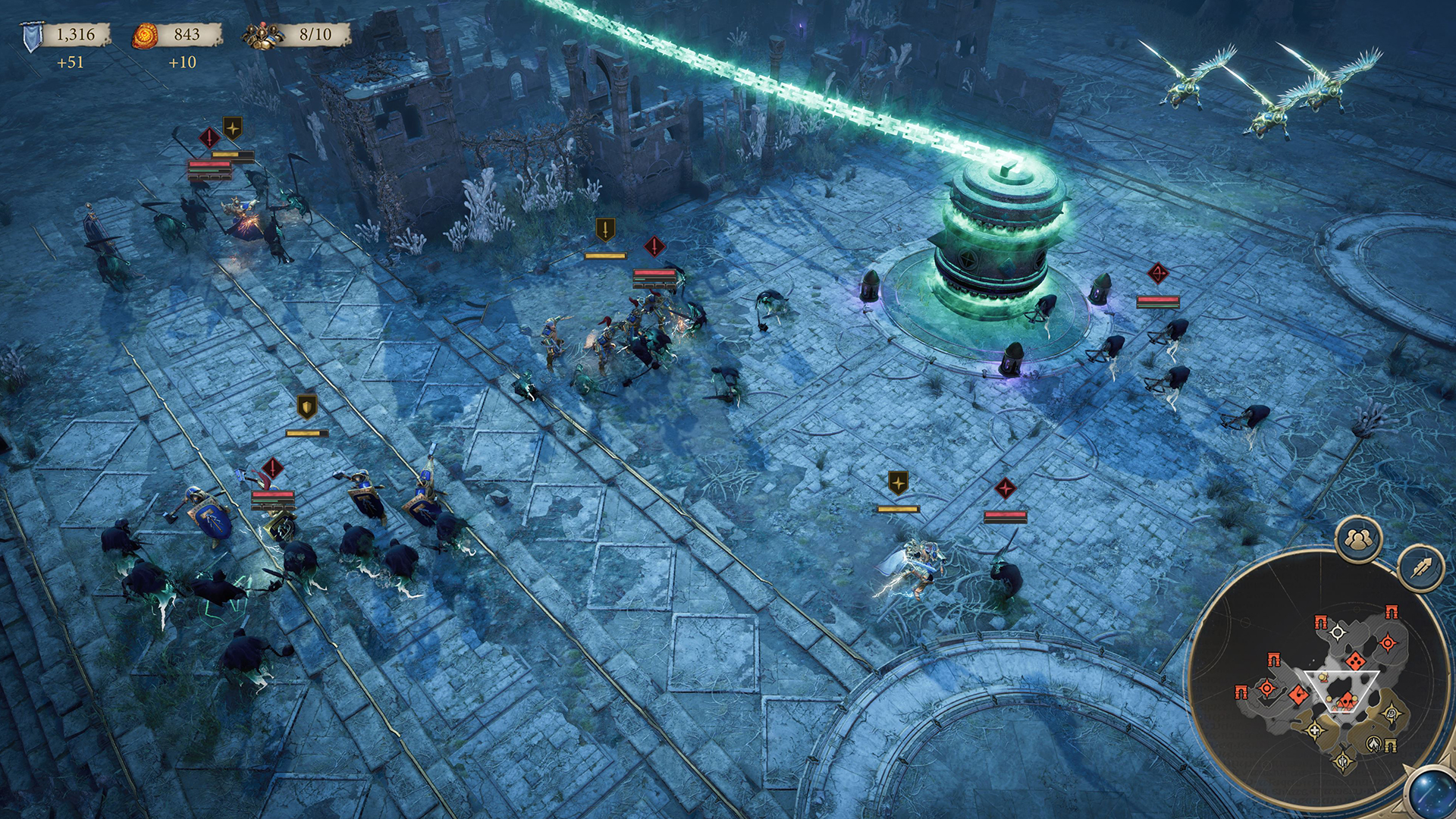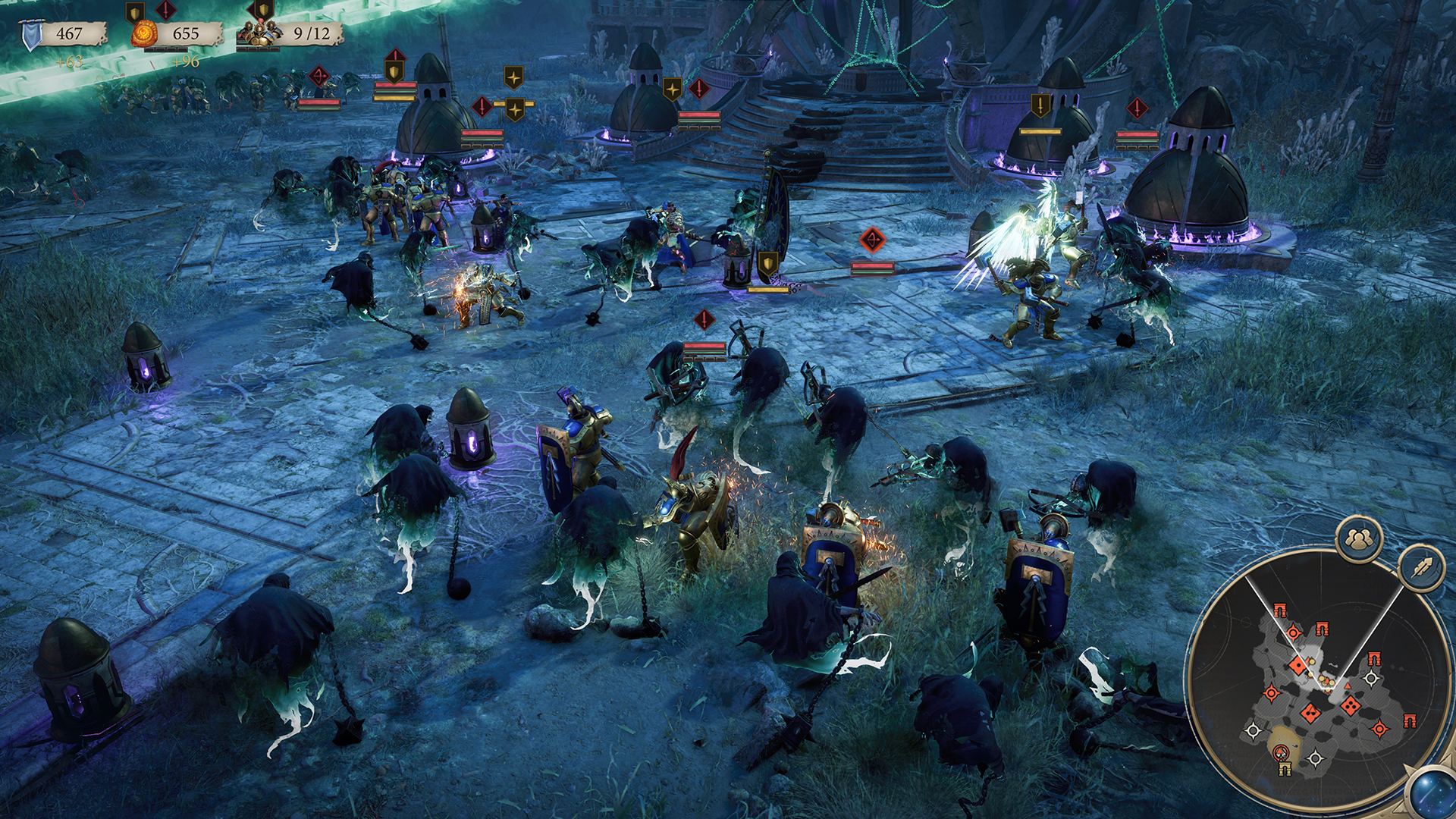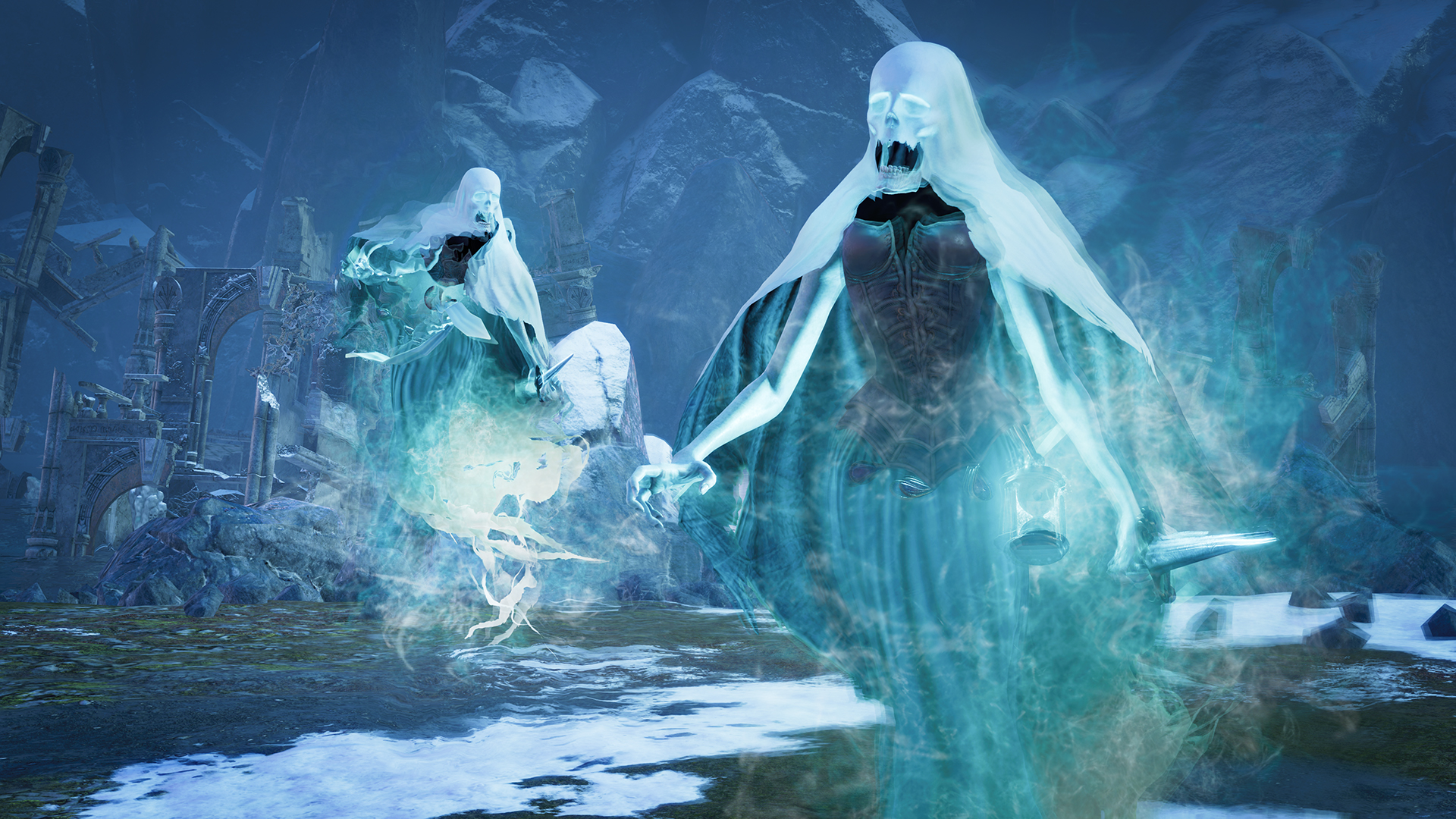The fine folks over at Frontier Developments invited us to play the upcoming Warhammer Age of Sigmar: Realms of Ruin in a remote hands-on event. This was handled via the remote-play app Parsec, and involved 2 missions of the single player campaign.
For the uninitiated, Warhammer Age of Sigmar: Realms of Ruin is a real-time-strategy game from Frontier Developments. It’s the first RTS to take place in the Age of Sigmar setting, and it wears its influences on its sleeve. With a focus on small unit tactics and active abilities over base building and resource gathering, it plays more like Dawn of War II than either that game’s predecessor or more traditional RTS fare like Age of Empires or Starcraft. We got to play it early in July, then some more in an open beta shortly thereafter. Let’s see what’s changed and what kind of malevolent malcontents we can look forward to meeting in this latest preview of Realms of Ruin.
What’s Changed
Before the event had even begun, I had been sent a keymap of the game’s controls. Frontier clearly took feedback from the previous sessions and the open beta, and had introduced a load of the options people felt were missing. Separate buttons for charging and retreating, WASD-controlled camera movements, and other much-requested features had been implemented, and it made the whole game a smoother experience. I only tried playing on mouse and keyboard this go around, but controller users will be able to take advantage of some of these new commands by holding a trigger and hitting a face button. I don’t recall this previously, but whenever one of my units used an active ability, said unit would audibly call it out. While this is helpful from an audiovisual standpoint to know that your ability went off, it also adds yet more texture to the experience. Part of what makes Vermintide or the Dawn of War games feel like Warhammer games is the voice acting, and having your Liberators yell out “Sigmar’s Aegis!” like its an anime attack paints that picture all the more vividly.
What I Played
For this session, each of us were given about 2 hours to play through the second and third missions of the single player campaign. Previously we only had access to the first mission before jumping into multiplayer, so this gave a better idea of what to expect from the campaign. In both of these missions we were controlling the Stormcast Eternals, but the full campaign will have missions from the perspective from each of the game’s 4 factions.
The first mission I played continued on from the scenario I played in the first hands-on event. Sigrun’s Dawnbringer Crusade is proceeding through the wildlands of Ghur, freeing the captured Vanguard elements of her Stormhost from numerous Kruleboy camps. Later, the Knight-Vexilor Iden joins in with some reinforcements, culminating in a final fight against a Murknob Shaman and a larger force of Orruks. This mission served as a tutorial for capturing and building on resource points, something I was already well versed in from my time with the multiplayer. As I had already learned what I needed to beforehand I wasn’t really challenged by this mission, but as an early teaching mission I think it would do a decent job at easing a player in. The visuals were, as always, lovely to behold, and I enjoyed the cutscenes bookending the experience. The motion capture and voice acting are solid, even if every time characters mention the fortress settlement of Harkanibus, I hear “Our Cannabis” – something I too am eager to defend. The banter between Iden and Sigrun characterizes them effectively and the actors have good chemistry, being two distinct takes on the golden supersoldier archetype. The last member of our principal cast is Demechrios, a fish out of water human wizard hanging out with these Stormcast. He kind of seems like he’s in over his head with all these brick/Sigmarite shithouses all around him. If this story goes like any other Warhammer story he’ll invariably either be corrupted by Chaos, possessed by Chaos, or manipulated by Chaos into doing something he doesn’t want to do. Maybe the story co-written by Gav Thorpe will be able to surprise us by bucking these Warhammer video game story traditions – we’ll see!
The second mission had my Stormcast stumble into a Nighthaunt trap, and the following 45 minutes involved a rather challenging game of Whack-A-Gheist. There were 3 locations I had to hold while Demechrios performed an unbinding ritual, so the challenge was holding off endless waves of ghosts while also capturing points, building up an army, and defending my base. I was warned by the our hosts that this was a much tougher mission than the first, and they weren’t kidding. Only by taking the peripheral capture points and building defensive towers on them was I able to hold the spooky scary spectres at bay long enough to take the trio of objectives and finish the fight. After breaking the ghost chains holding some McGuffin in place, a Nighthaunt Knight of Shrouds said something about a prophecy, got owned by Iden, and that was the end of my time.
Both of these missions were enjoyable and I could see how they would fit into a typical linear campaign structure. The second especially was a welcome challenge, and as an RTS veteran I felt right at home bouncing around the map, juggling resources, and keeping my principal force topped off. I’m looking forward to seeing how the story progresses with these characters, and what kind of big setpieces the campaign has left to deliver. As with any RTS worth its realmstone, the campaign serves as an extended tutorial for multiplayer, but I’m glad it’s getting no shortage of narrative attention.
The Nighthaunt
I’ll be honest, I didn’t get enough time with the Nighthaunt to really figure them out as a faction. In the trailer I got to watch before the event, a wide variety of units were shown off, but all I ran into in my mission were melee trooper Chainghasts, crossbow-armed Craventhrone Guard, and the Knight of Shrouds. With endless hordes of both boos and crossboos to contend with, I wasn’t able to engage with the faction beyond “shoot the choppy ones and chop the shooty ones”. Visually, the whole faction looks fantastic, but we’ll probably have to wait just a bit longer to find out how they play and figure out what sets them apart from the other horde faction, the Kruleboyz. The abilities and rules of the tabletop have thus far had a heavy influence on how units are portrayed in Realms of Ruin, so for now all we can do is guess how closely they’ll stick to the analog flavor of Warhammer.
What’s Next
There is still one faction left to be revealed, and any Age of Sigmar player could tell you that with Order, Death, and Destruction represented thus far, we’re still awaiting a faction from Grand Alliance: Chaos. While this last faction remains a mystery, in our preview we also got to see a smidge of Conquest Mode. This run-based, procedurally generated mode will have you leading your army through a series of 1v1 battles with randomly generated modifiers. These modifiers could be limited visibility, faster movement, or time limits to work within. Players can run through Conquest Mode attempting to get high scores, and earn extra attempts from accomplishing certain objectives. This roguelite structure is unusual for an RTS, and while I personally think the campaign and multiplayer sound more compelling, I’m intrigued by the concept and look forward to giving it a go. We’ll be able to find out more soon enough, as Warhammer Age of Sigmar: Realms of Ruin releases on November 17 for PC, PlayStation 5, and Xbox Series X|S.
Have any questions or feedback? Drop us a note in the comments below or email us at contact@goonhammer.com.
